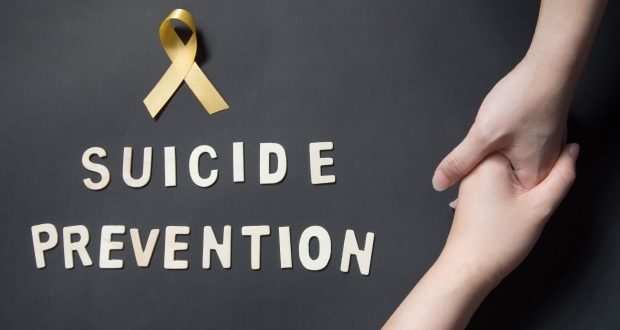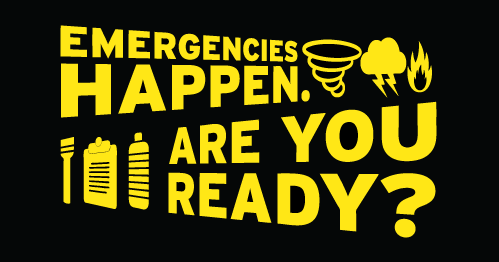Preventing Suicide – Notice The Signs
Content Warning: Certain details in this article may be difficult and/or triggering to read for some individuals. If you or a loved one are experiencing suicidal thoughts, please reach out to the National Suicide Prevention Hotline at 1-800-273-8255.
If you’ve been affected by suicide, you’re not alone. You may have experienced suicidal ideation while living with a mental illness. You may have experienced the loss of a loved one.
Regardless of how suicide has affected you, talking about it is essential for prevention. The more we talk about suicide prevention, the more we remove the stigmas surrounding it.
They give people the best possible support they can have. It’s essential to learn everything we can about suicide prevention.
Suicide
Suicide refers to the act of harming oneself to end their life. In comparison, a suicide attempt is when a person attempts to harm themselves to end their life but does not complete the action.
Suicidal ideation refers to thoughts or ideas of harming oneself. Suicide is very complicated, but it’s preventable.
When looking at what causes suicide and the events leading up to it, it’s technically classified as a symptom. Many determining factors lead up to suicide and/or thoughts of suicide.
These can include childhood abuse, sexual violence, or mental illness. Some of the most effective ways to prevent suicide are community support and increased access to healthcare.
Current Statistics
Suicide is a growing public health concern in the United States. Suicide is currently the 10th leading cause of death in the country, with about one death every 11 minutes. These numbers increase when including those living with suicidal thoughts or survivors of suicide attempts.
Suicide affects all people, but certain groups are more at risk than others. Current statistics show that middle-aged white men have the highest rate of suicide in the U.S.
Indigenous people have the second-highest rate of suicide. Certain career paths include a higher risk of suicide, including veterans.
People in the LGTBQIA+ community have a higher rate of suicidal ideation when surrounded by an unsupportive and/or accepting environment.
Risk Factors
Suicide can affect anyone, but risk factors are important to be aware of for preventative purposes. When looking at statistics, men are more likely to complete suicide than women.
However, the numbers of attempted suicides increase among women. Statistically speaking, men are more likely to use lethal methods such as firearms.
Even so, these numbers only give us a broad generalization of risks. These may not apply to every person and can change into specific groups. The following factors may contribute to a higher risk of suicide:
- Survivor of a previous suicide attempt
- Intense stress from a serious life event (i.e., military services)
- Living with substance abuse
- Underlying health conditions, both mental and physical
- Family history of substance abuse, mental illness, or violence
Children and Teenagers
When looking at suicide rates as a whole, children and teenagers make up the lowest amounts of people completing suicide or living with suicidal ideation.
However, when this is narrowed down, suicide becomes the second leading cause of death for this age group.This typically happens because children and adolescents don’t process certain life events as adults do.
For instance, struggling with school may seem insignificant to an adult, but it could be unbearable for a child. Any of the following situations could contribute to suicidal ideation in children and adolescents:
- Being a victim of bullying
- Living with a mental illness
- Loss or conflict with close friends and family members
- Living with substance abuse
- Physical and/or sexual abuse
- Being uncertain of sexuality and/or gender identity in an unsupportive and/or accepting environment
Starting Antidepressants
Antidepressants are usually safe and important treatment options for people living with mental illness. However, the Food and Drug Administration always requires antidepressants to have a black box warning, the strictest precaution for prescriptions.
This has to do with the initial stages of starting antidepressants, specifically the first few weeks. For young adults and children under the age of 25, antidepressants can have opposing effects that increase suicidal thoughts or behaviors.
However, these are temporary side effects. They mainly apply to young adults, and antidepressants contribute to decreased rates of suicide overall.
Warning Signs
Whether you or a loved one is experiencing suicidal ideation, it’s always important to be aware of the warning signs. Signs of suicide can range from being very noticeable to extremely subtle.
Some people vocalize their feelings clearly while others keep them private. In general, no two people are the same regarding suicidal warning signs. If you or a loved one have been exhibiting the following behaviors, please reach out for help immediately:
- Making alarming statements such as “I wish I hadn’t been born,” or “I’m going to kill myself.”
- Noticeable, sudden mood swings
- Withdrawing from close friends and family
- Purchase of potentially lethal items such as firearms or pills
- Feelings of hopelessness or emptiness
- Expressing feelings of being “trapped.”
- Saying goodbye to loved ones
- Giving away important, personal items
- Partaking in impulsive, risky behaviors (i.e., intentionally driving a car over the speed limit)
- Finalizing affairs, such as making a will
- Changes in eating and/or sleeping patterns
- Substance abuse
- Increased anxiety and/or agitation
- Expressing feelings of guilt, being a “burden,” or shame
- Concerning online search histories that ask about ways to harm oneself
When to Reach Out
If you’re experiencing suicidal thoughts but don’t plan on hurting yourself, reach out for help immediately. Suicidal ideation can quickly evolve into something more serious.
Your loved ones will want to help you through this challenging time. Always remember that you’re not alone, you matter, and there’s no shame in asking for help.
In summary, suicidal ideation never improves on its own. It’s also important to recognize that suicidal ideation is a temporary symptom. If you’ve been struggling, reach out to a trusted family member, friend, or mentor.
Make an appointment with a mental health professional or healthcare provider of choice. If you’re religious, contact a trusted spiritual mentor.
When to Get Involved
If there’s anything that you take away from this article, it’s that you can never be too “safe” with suicide prevention. Some people hesitate to intervene with the worry that they’re “overreacting.”
Even if it ends up being a false alarm, at least they know that you’re there to help. But, in the worst-case scenario, helping a struggling friend or loved one could potentially save their life.
Generally speaking, any of the previously mentioned warning signs must be addressed. It should also be emphasized that suicidal ideation is not a normal stress response.
Many people can get through a difficult time in their life without thoughts of suicide. This is especially true if you know them well to differentiate their usual behaviors from their newly developed ones.
How to Help in Preventing Suicide
Approaching a loved one living with suicidal ideation can seem daunting. Granted, it’s always good to read the room and the person’s surroundings. In other words, approaching them about their suicidal thoughts in the middle of a party is never appropriate.
Even if it’s unintentional, incorrectly approaching your loved one could accidentally push them further away from you. However, the most important thing to remember is that you’re there to help.
Instead, the National Institute of Mental Health offers five helpful steps of action to addressing suicidal ideation:
1. Ask
Directly ask them, “are you thinking about killing yourself?” Contrary to popular belief, asking the person if they plan to kill themselves will not increase their need to perform the action. If anything, it may help them feel less alone if you give them a chance to talk about it.
2. Keep them safe
It’s not easy to do, but you must always ask them if they have a planned method to kill themselves. If they say yes, ask them to show you where they have it and keep them away from potentially lethal items.
3. Be there
Research has proven that talking about suicidal feelings reduces the person’s chances of completing suicide. At the same time, listen closely to their feelings and acknowledge them. Let them speak, no matter what it is.
4. Help them connect
Direct them to the National Suicide Prevention Lifeline and the crisis text line number. If it makes them more comfortable, help them connect with another trusted friend, family member, spiritual mentor, or mental health professional.
5. Stay connected
Once they’ve gotten help or have been discharged from care, make sure to follow up with them. Try to make this consistent well after they’ve gotten help.
Teen suicide is one of the leading causes of death in teens. Here are a few things to know about teen suicide.






